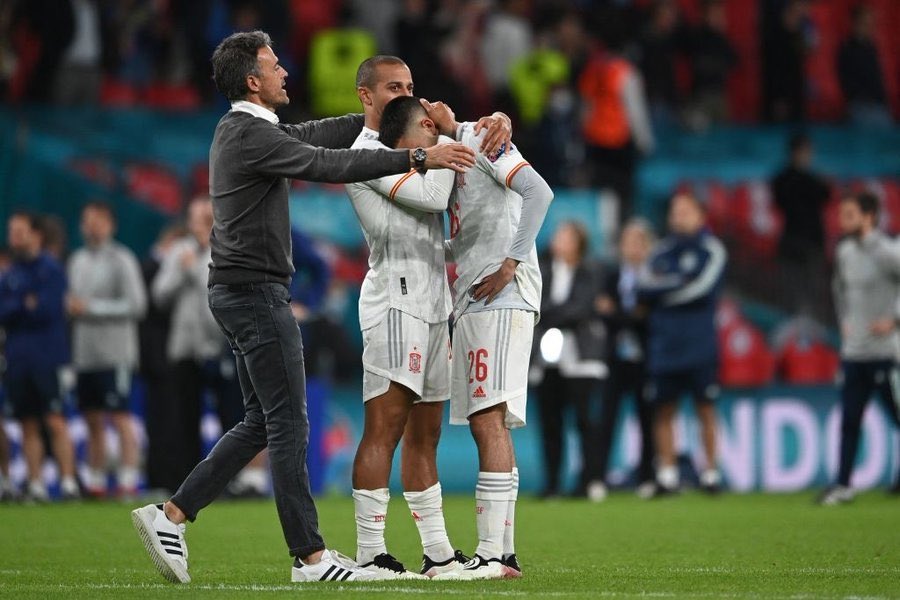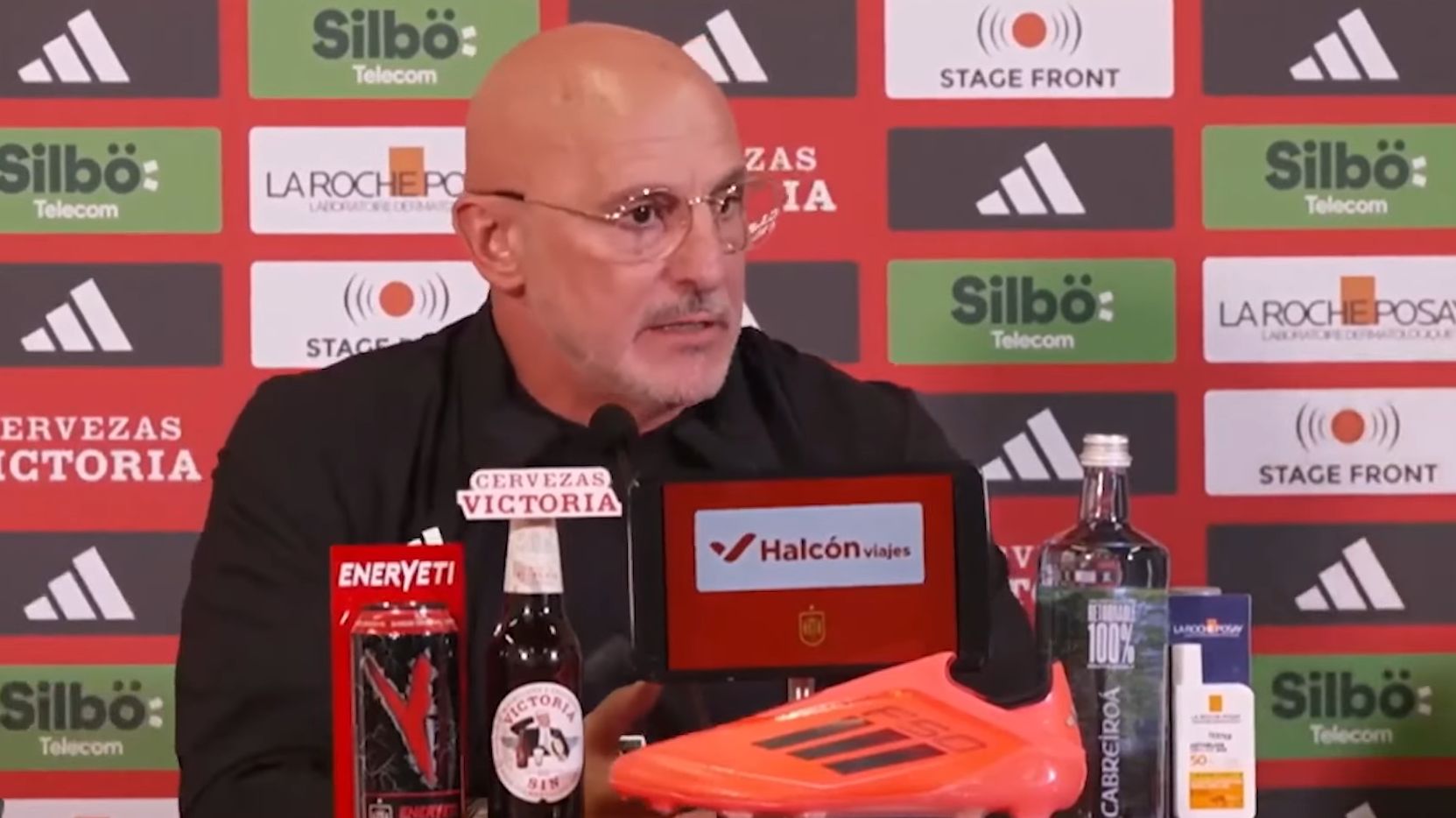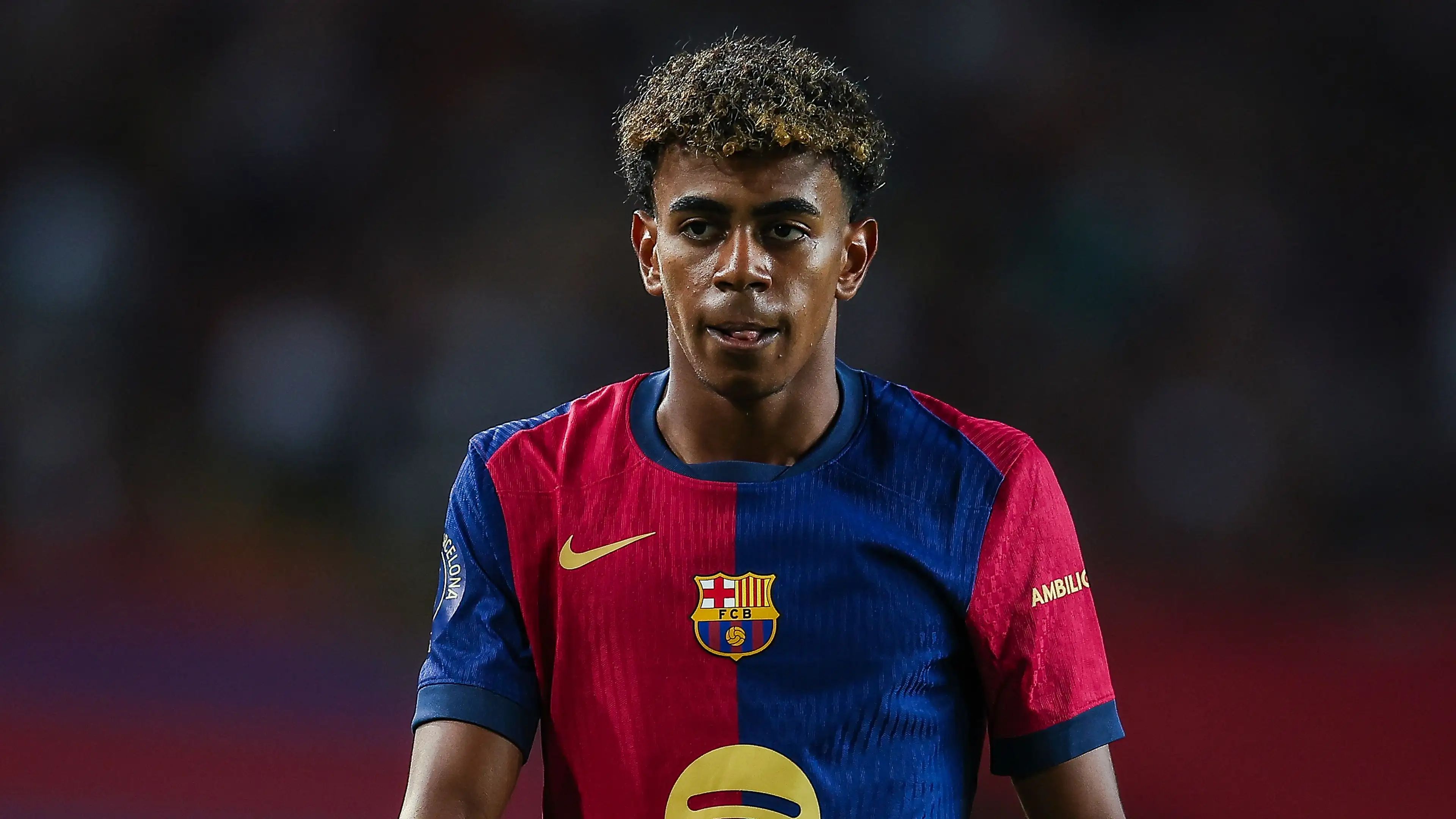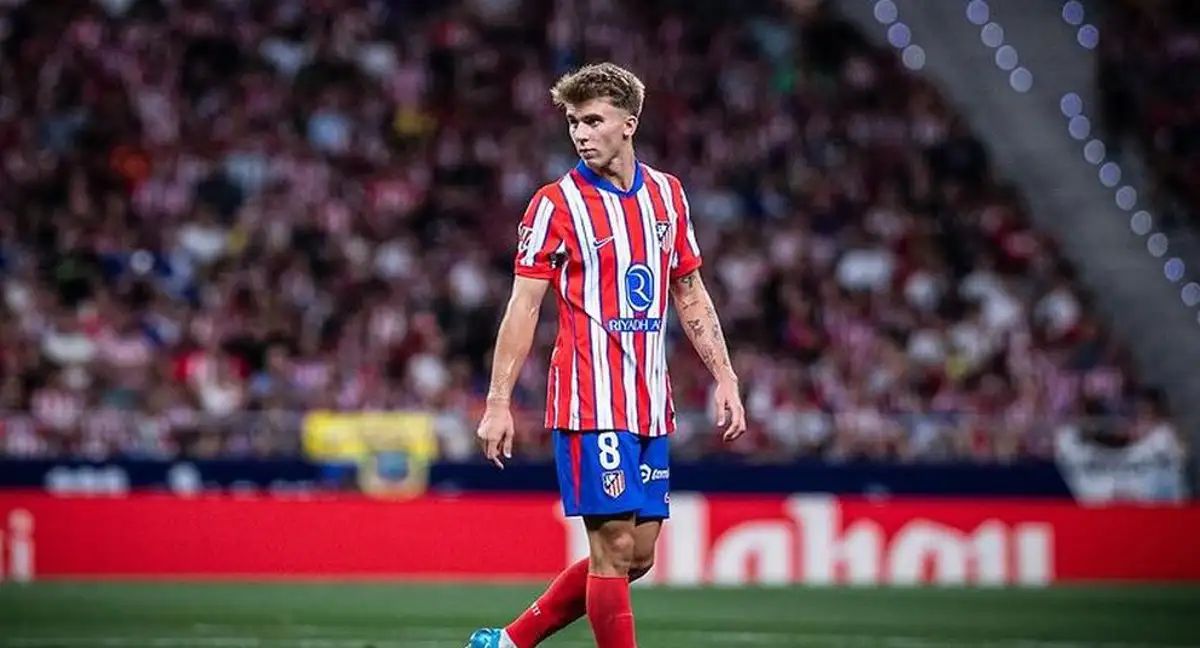Author and commentator Jon Driscoll has taken a look at Luis Enrique and La Roja’s performance at Euro 2020 for Football Espana. Check out Jon’s book, detailing the 50 most influential players in the history of football: The Fifty: Football’s Most Influential Players.
When Luis Enrique’s name was read out on the PA at Wembley Stadium before their Euro 2020 semi-final with Italy, the verdict was clear: the Spanish national team coach was a hit, certainly with the British-based Spaniards in the stadium.
When elimination came from the penalty spot a couple of hours later, the feeling hadn’t changed. Spain had gone down fighting, and after calamitous recent tournaments they were back among the big beasts of international football. Some commentators installed them as favourites to win next year’s World Cup and the hard-headed bookmakers priced them shorter than Italy and Argentina. Before the Euros, I had categorised Spain as one of the sides that could win it given a fair wind, bracketing them with eventual finalists Italy and England. Did we see anything here to upgrade that assessment?
It is hard to be precise when analysing international tournaments. Spain played just six games – so it’s akin to drawing firm conclusions on a club team in mid-September. Luis Enrique has had a much better press than Didier Deschamps but France, exactly like Spain, lost just once and that was in a shoot-out. I would still rate Spain’s current crop of players as A-minus in international terms. There are lots of very good technical players, but the pool runs a little dry in certain positions, most notably forwards who can consistently take chances, and a reliable goalkeeper who relishes having the ball at his feet. It was a fun tournament for Spain in the end, but they only won once inside 90 minutes despite a light travel schedule and a favourable fixture list.
My main fear pre-tournament was that Spain would struggle to break down defensive teams and be vulnerable on the break. That was the case against Sweden, who had clear chances to win in Seville after soaking up Spain’s 75% possession. Paulo Sousa’s Poland tried to play on the front foot and while Spain again dominated the ball, Robert Lewandowski’s goal forced a draw. At this stage, it was the same old Spain.
Against Slovakia it was goalless for half an hour, but then Martin Dubravka punched the ball into his own goal and Spain finished with five. Two own goals helped, but the return of Sergio Busquets to midfield and the introduction of a man who knows the ins-and-outs of full-back play, Cesar Azpilicueta, improved Spain; wisdom to augment youth.

They hit another five against Croatia, albeit thanks to extra-time, and it was becoming clear that Luis Enrique wanted his men to play with more pace, more positivity. After the endless chopping and changing in his tenure to date, we could see an identity.
We can get philosophical about the nature of luck, but it was generally considered to be a break for Spain when Switzerland beat the world champions France and became their quarter-final opponents. I had my doubts and Luis Enrique’s men again failed to turn a massive possession advantage (66%) into clear chances and goals. Another own goal, early in the contest and a 77th minute red card for Remo Freuler were bonuses, but Spain were grateful when the Swiss overthought the shoot-out, and Unai Simon delivered.
A team’s legacy in a tournament is usually decided by whether they had any classic games, and how they eventually lose. Hitting five goals twice, ticked the first box and the superb Wembley semi-final meant Spain also bowed out with considerable credit.
Britain’s Spanish population came out in number and fine voice although they were outnumbered by the Italians. My suspicion that Spain would be better against better opponents was borne out. Dani Olmo operated as a false 9 and they had chances – Mikel Oyarzabal spurned the best of them. Italy went in front, but Alvaro Morata was called from the bench, scored a fabulous equaliser before ending up as the ultimate fall guy, missing the critical penalty.
Luis Enrique’s 4-3-3 seemed settled and effective. They pressed with purpose and positivity against Italy and looked like a team making a positive transition. Aymeric Laporte and Dani Olmo won new admirers, but the Spanish sensation was Pedri, fully trusted by the coach and playing with a maturity beyond reasonable expectation.

We still don’t know how Spain will score goals on a consistent basis. I guess Morata will be used as a centre-forward when the World Cup qualifiers resume in September. Maybe a fit and firing Marco Asensio or an in-form Paco Alcacer can make a difference but there is no obvious personnel change here. Ansu Fati will return one day; let’s hope for positive medical reports for the Barcelona youngster soon.
The goalkeeping problem is not easily solved either. Unai Simon made good saves, especially in the shoot-out against Switzerland and was unlucky that denying Manuel Locatelli counted for nothing against Italy. The stumbling block is his lack of footballing ability. It was savagely highlighted in a horrible moment against Croatia where he inexplicably let Pedri’s backpass into the net – but against Italy it was clear he was too uncomfortable receiving and redistributing the ball to be a successful part of Luis Enrique’s model. He has to improve or be replaced; in his favour is a lack of obvious alternative.
My main reservation about Luis Enrique is that he made lots of small mistakes. Marcos Llorente should have played in midfield, not every minute, but for more than one extra-time appearance. It seemed strange to see Rodri used in that role in preference. Adama Traore’s inclusion in the squad was a surprise but he wasn’t used when the situation seemed to be calling. We saw him as an attacking right back against Slovakia but only with the game effectively decided. When Spain were 1-0 down against Italy, he and Marcos Llorente were ready to come on as Morata scored: Llorente later appeared at right-back but Adama sat back down. Italy were able to defend and break, and won the shoot-out so we never did find out how Wolves’ flying winger would have got on against a tiring Giovanni Di Lorenzo or the slightly awkward Rafael Toloi. I could go on and while this may seem like nit-picking, international tournaments can pivot on small details.
I questioned the decision to take only 24 players rather than 26 but I don’t think that mattered in the end – Diego Llorente, for example, could have started his holiday a month earlier. The omission I still think was an error was Sergio Ramos. His aerial ability from set pieces and his leadership were surely missed against Italy, and if we believe PSG’s medical department, he was more than fit to go. Of the other players left out I would suggest Iago Aspas might have made a difference, though it is fair to ask whether he is significantly better than Ferran Torres, Oyarzabal, Olmo and Gerard Moreno.
Success in international football is largely a question of marrying up the long-term development of players and the short-term business of tournament management but a coach who sticks around in the medium term and develops a team identity is a real strength. By the end of the tournament, I was enjoying Luis Enrique’s Spain more than I had at the beginning, when they couldn’t deal with Sweden’s anti-football. The World Cup qualifiers resume in early September with a trip to Solna and we know how the Swedes will play. We’ll find out then what Spain have learned from Euro 2020.




